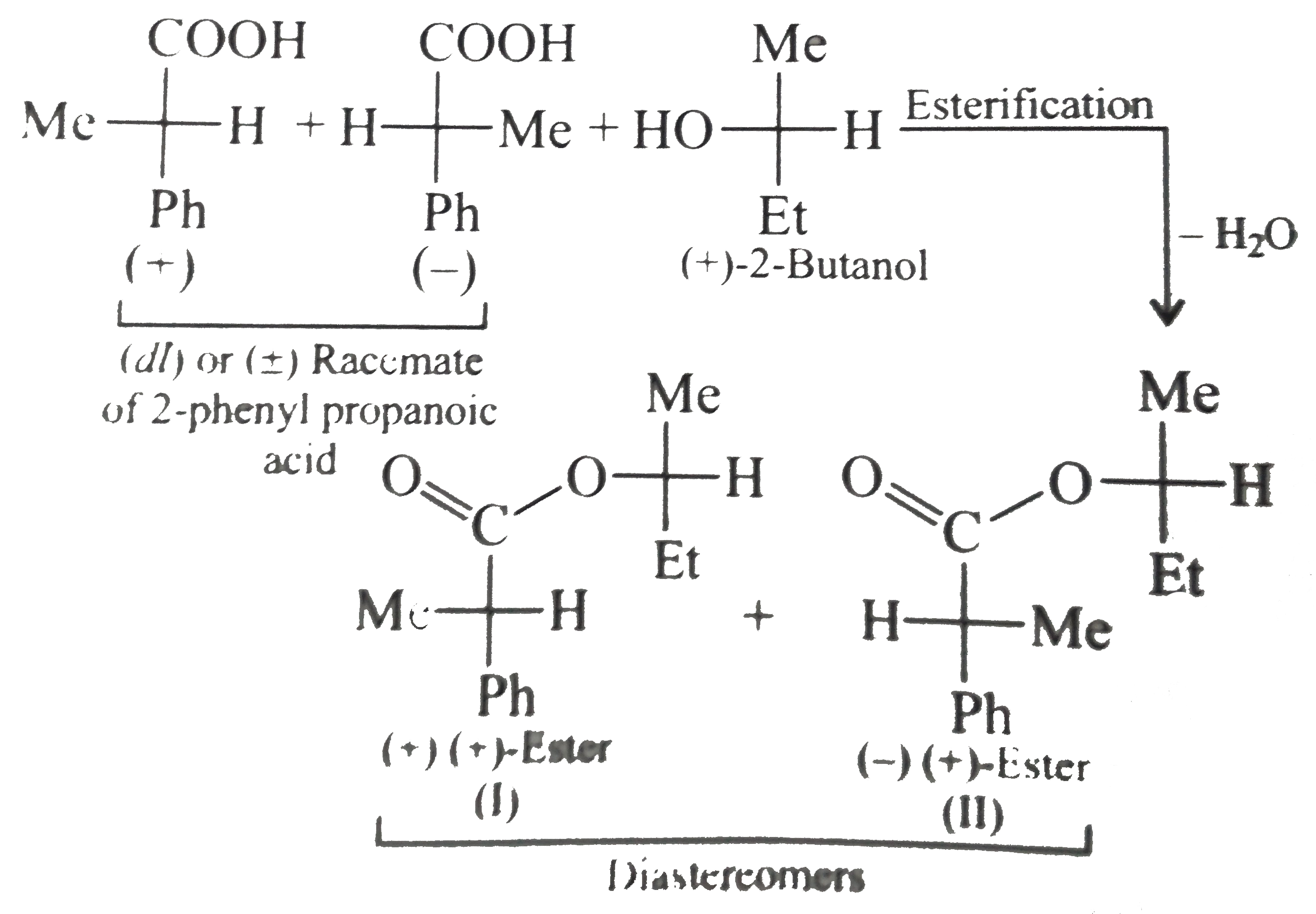A racemic mixture of (±)2−pheynl propanoic acid on esterification with (+)2−butanol gives two esters. Mention the seterichemistry of the two ester produced.

During esterification, the bonds attached to the chiral C atom are not broken. So the optical activity of both the acids and alcohol does not change, hence the two esters (IandII) are diastereomers.
Topper's Solved these Questions
- BOOK - CENGAGE CHEMISTRYCHAPTER - CARBOXYLIC ACIDS AND THEIR DERIVATIVESEXERCISE - Exercises Archives (True/False)2videos
CARBOXYLIC ACIDS AND THEIR DERIVATIVES
- BOOK - CENGAGE CHEMISTRYCHAPTER - BIOMOLECULES, POLYMERS AND CHEMISTRY IN EVERYDAY LIFEEXERCISE - QUESTION BANK8videos
BIOMOLECULES, POLYMERS AND CHEMISTRY IN EVERYDAY LIFE
- BOOK - CENGAGE CHEMISTRYCHAPTER - CHEMICAL KINETICSEXERCISE - Archives Subjective23videos
CHEMICAL KINETICS
Similar Questions
A recemic mixture of (±) 2-phenylpropanoic acid on esterification with (+) 2-butanol gives two ester.
Mention the stereochemistry of the two esters produced.View SolutionMention two esters produced when a recemic mixture of 2-phenyl propanoic acid is treated with (+) 2-butanol. What is the stereochemical relationship between these esters ?
View Solution
Knowledge Check
- Question 1 - Select One
Silver salt of 2-methyl propanoic acid on reaction with bromine gives
ACH3CH2BrBCH3CH∣CH3−COBrCCH3−CH2CH2BrDCH3−CH3∣CH−Br - Question 2 - Select One
Propanoic acid on warming with Br2 in presence of red P gives
ACH3CH2COBrBCH3CH2BrCCH3CHBrCOOHDCH2BrCH2COOH - Question 3 - Select One
Propanoic acid on warming with Br2 in presence of red P gives
ACH3CH2COBrBCH3CH2BrCCH3CHBrCOOHDCH2BrCH2COOH
Give two uses of esters.
View SolutionGive two uses of esters.
View SolutionAcid catalysed dehydration of t-butanol is faster than that of n-butanol because
View SolutionStatement-1:A recemic mixture of 2-chloropropanoic acid is treated with excess of (+)-2-Butanol.The

Statement 2: The solution of reaction mixture at time (t=0) , will be dexterorotatory.View Solutionβ−Hydroxy propanoic acid on heating gives acrylic acid.
Acrylic acid exists in two diastereomers.View Solution

